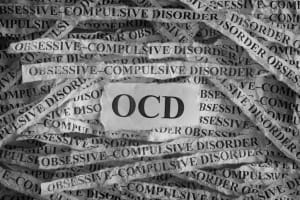
When Enough Isn’t Enough: Diagnosis and Treatment for Obsessive Compulsive Disorder
Obsessive Compulsive Disorder is a unique diagnosis that requires a specialized approach. Knowing this disorder’s characteristics and evidenced-based treatment approaches is essential to supporting clients who have OCD. This training will review the diagnostic criteria for OCD, paying special attention to the main characteristics of obsessions and compulsions. Learners will discover assessment procedures that elicit core symptomology. CBT and ERP will be presented as the preferred, evidenced-based approaches to treating this disorder and learners will define proper treatment approaches and interventions.
Upon completion of this training, participants will be able to:
- Examine diagnostic criteria for OCD and formulate methods of case conceptualization.
- Distinguish between obsessions and compulsions and explain methods of clinical assessment.
- Formulate evidenced-based treatment approaches and articulate methods of targeting OCD symptoms and behaviors.
Social workers completing this course receive 3 Clinical asynchronous continuing education credits.
For other board approvals, this course qualifies for 3 hours of Clinical continuing education training.
Course Instructor: Diane Bigler, LCSW, LSCSW
Recording Date: 8/17/2024
Recorded Live Webinar with downloadable presentation slides and/or handouts, evaluation, and a required quiz. The learner is required to pass with a 70% or higher to achieve the CE certificate of completion. The learner is able to reset the test until a satisfactory score is achieved. CE Training Workshops, LLC, provider #1770, is approved as an ACE provider to offer social work continuing education by the Association of Social Work Boards (ASWB) Approved Continuing Education (ACE) program. Regulatory boards are the final authority on courses accepted for continuing education credit. ACE provider approval period: 8/2/2022 – 8/2/2025. CE Training Workshops, LLC has been approved by NBCC as an Approved Continuing Education Provider, ACEP No. 7091. Programs that do not qualify for NBCC credit are clearly identified. CE Training Workshops, LLC is solely responsible for all aspects of the programs. System Requirements: Firefox, Chrome, Brave, Safari, Edge on any modern operating system (Windows, MacOS, Linux, Android, iOS). A desktop browser is recommended. We do not provide support resources for issues encountered using a mobile device. For more information about our policies and board approval statements, please visit our FAQS page.
Diane Bigler, LCSW, LSCSW is a Licensed Clinical Social Worker in Missouri and Kansas with over 25 years of experience in the mental health field.
When Enough Isn’t Enough: Diagnosis and Treatment for Obsessive Compulsive Disorder (3 HR) Syllabus
I. Understanding OCD
- Defined by persistent obsessions and/or compulsions
- OCD differs from addictive behaviors; driven by anxiety, not pleasure
- Key features include distress when rituals are interrupted and intrusive thought patterns
II. Common Obsessions and Compulsions
- Obsessions: contamination, symmetry, harm, intrusive thoughts
- Compulsions: checking, cleaning, arranging, mental rituals
- Thought-action fusion and moral fusion distort reasoning
III. Diagnostic Criteria and Assessment
- Use of DSM-5 criteria for OCD (presence of obsessions/compulsions)
- Assess severity, frequency, insight, and impairment
- Tools: Y-BOCS Symptom Checklist, OBQ-44, and clinical interviews
IV. Differentiating OCD from Similar Conditions
- OCD vs. OCPD: ego-dystonic vs. ego-syntonic traits
- Consider comorbidities (anxiety, depression, eating disorders)
- Differential diagnosis examples using case studies (e.g., Rachel, Jennifer)
V. Cognitive Behavioral Therapy (CBT) for OCD
- Core treatment modality focusing on distorted thoughts and avoidance
- Use of thought records, Socratic questioning, and goal-setting
- Avoid reinforcing obsessions with reassurance or engagement
VI. Exposure and Response Prevention (ERP)
- ERP is the gold standard for OCD treatment
- Combines in vivo and imaginal exposures to reduce ritual use
- Hierarchical exposure planning with SUDs ratings to monitor progress
VII. Practical Implementation of ERP
- Develop exposure hierarchies and assign structured homework
- Use pattern interruption strategies to disrupt compulsive cycles
- Encourage anxiety tolerance and track reduction in avoidance
VIII. Medications and Combined Treatment
- SSRIs commonly prescribed at higher doses for OCD
- Medication often complements therapy but isn’t required
- Recommend psychiatric evaluations when indicated
IX. Client Engagement and Barriers to Progress
- Factors influencing treatment success: insight, subtype, motivation, comorbidity
- Common challenges: client resistance, dropout, family reinforcement of symptoms
- Strategies to address setbacks and build long-term resilience
X. Resources and Client Support Tools
- Tools: ERP motivators, Exposure Hierarchy worksheets, CBT logs
- Support: International OCD Foundation, OCD-specific workbooks, podcasts
- Client education on ERP, coping skills, and mindfulness integration (e.g., Four Step Method)


